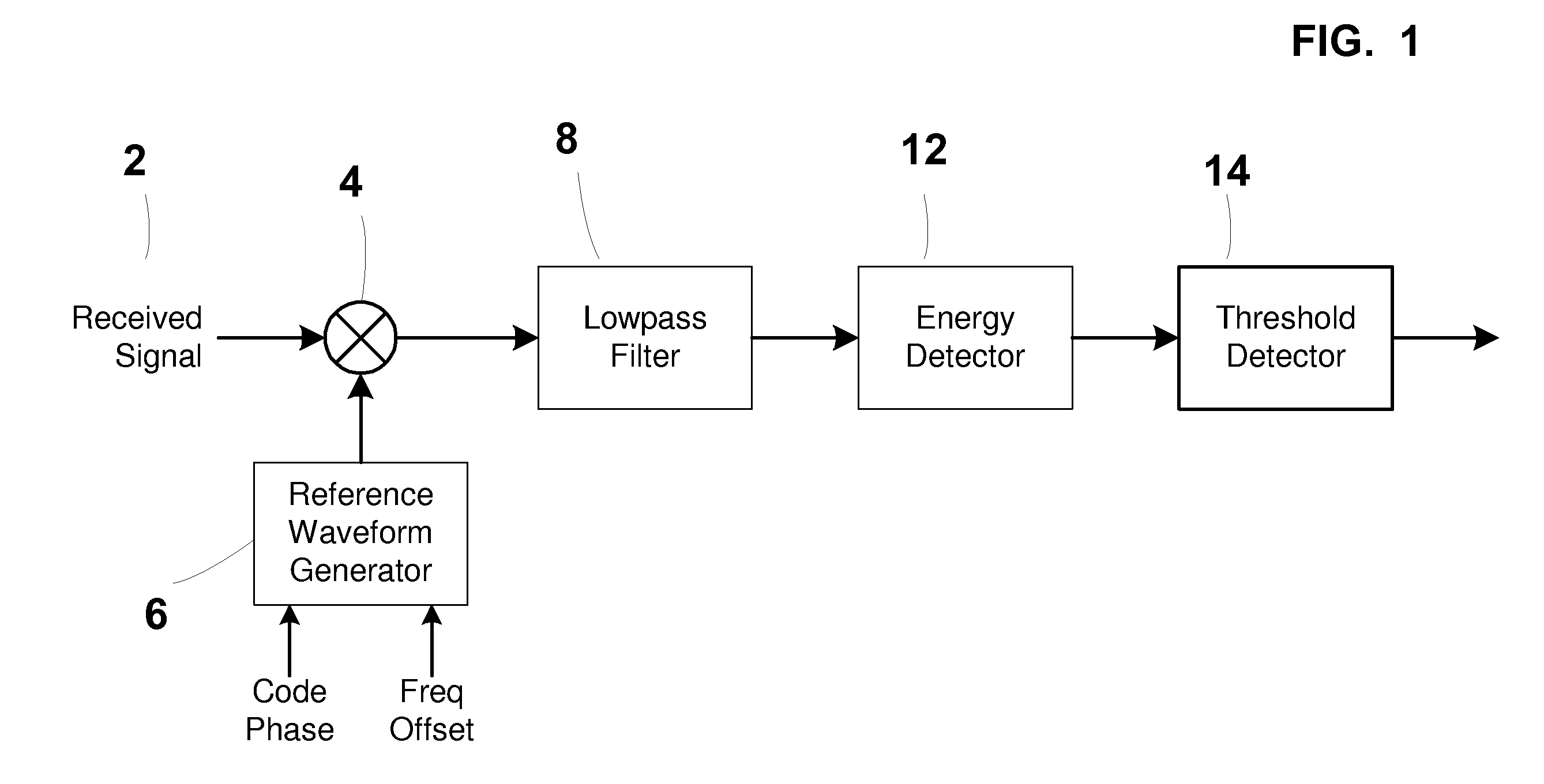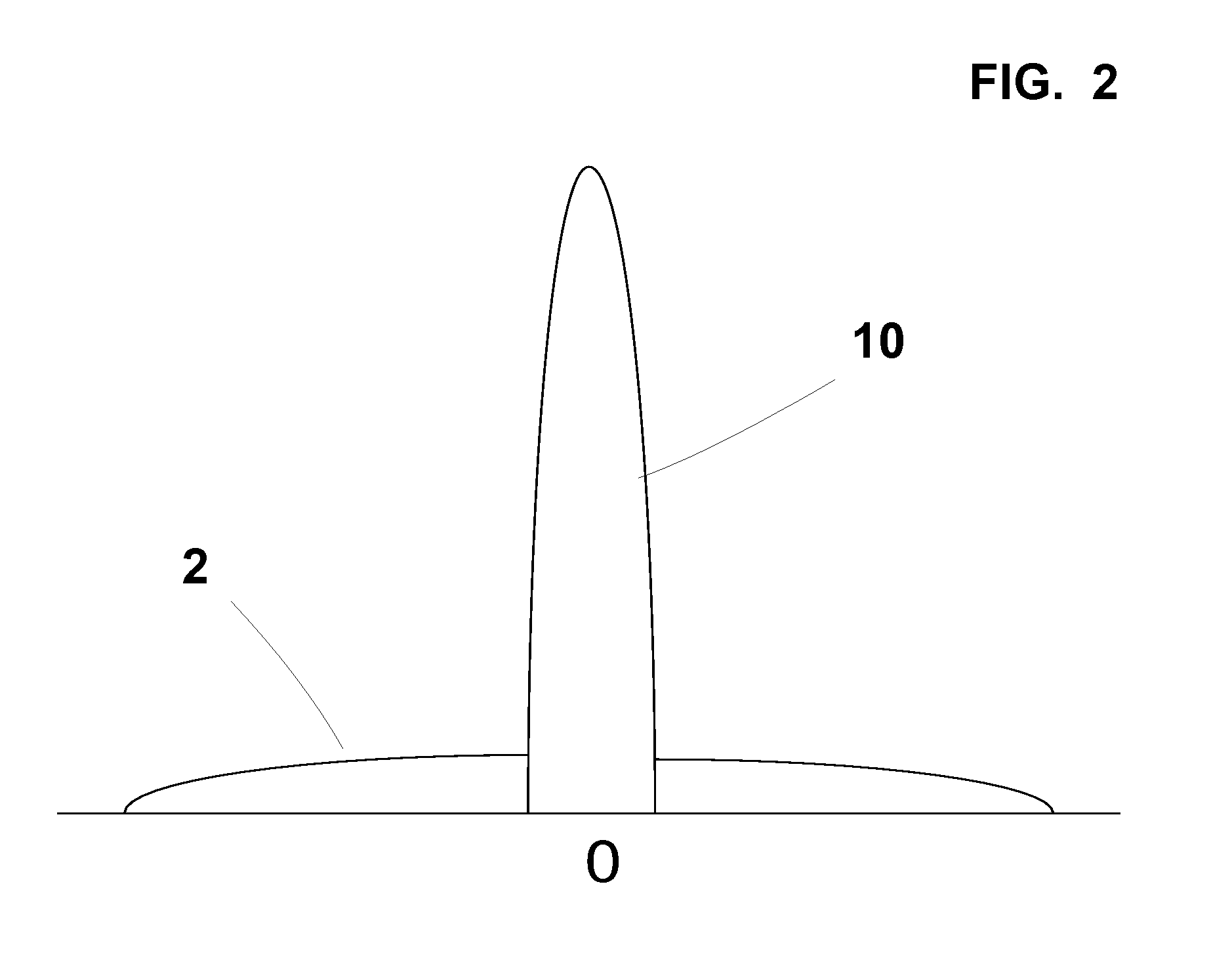Pseudorandom Noise Code Acquisition in Direct Sequence Spread Spectrum Systems
a spread spectrum and sequence spread technology, applied in the field of wireless communications, can solve the problems of challenging initial code acquisition in both phase and frequency
- Summary
- Abstract
- Description
- Claims
- Application Information
AI Technical Summary
Problems solved by technology
Method used
Image
Examples
Embodiment Construction
[0009]In direct sequence spread spectrum systems, the carrier phase of the transmitter abruptly changes as a function of a pseudo-random code sequence and the information data in the spreading process. For instance, Code Division Multiple Access (CDMA) is a spread spectrum technique which uses high-speed pseudorandom noise (PN) codes to scramble data words, and to spread spectral occupancy (that is, to cause the coded data signal to cover a broader spectrum of frequencies than that of the original signal) for added robustness.
[0010]Performing a spread spectrum coding of an information signal is generally achieved by multiplying the digital information signal with a spreading code, also known as a chip sequence. The chip sequence has a much faster data rate than the information signal, so the signal bandwidth is expanded, or “spread”, beyond the original bandwidth occupied by just the information signal.
[0011]The term “chip”, meaning an encoding element, is used to distinguish the sh...
PUM
 Login to View More
Login to View More Abstract
Description
Claims
Application Information
 Login to View More
Login to View More - R&D
- Intellectual Property
- Life Sciences
- Materials
- Tech Scout
- Unparalleled Data Quality
- Higher Quality Content
- 60% Fewer Hallucinations
Browse by: Latest US Patents, China's latest patents, Technical Efficacy Thesaurus, Application Domain, Technology Topic, Popular Technical Reports.
© 2025 PatSnap. All rights reserved.Legal|Privacy policy|Modern Slavery Act Transparency Statement|Sitemap|About US| Contact US: help@patsnap.com



